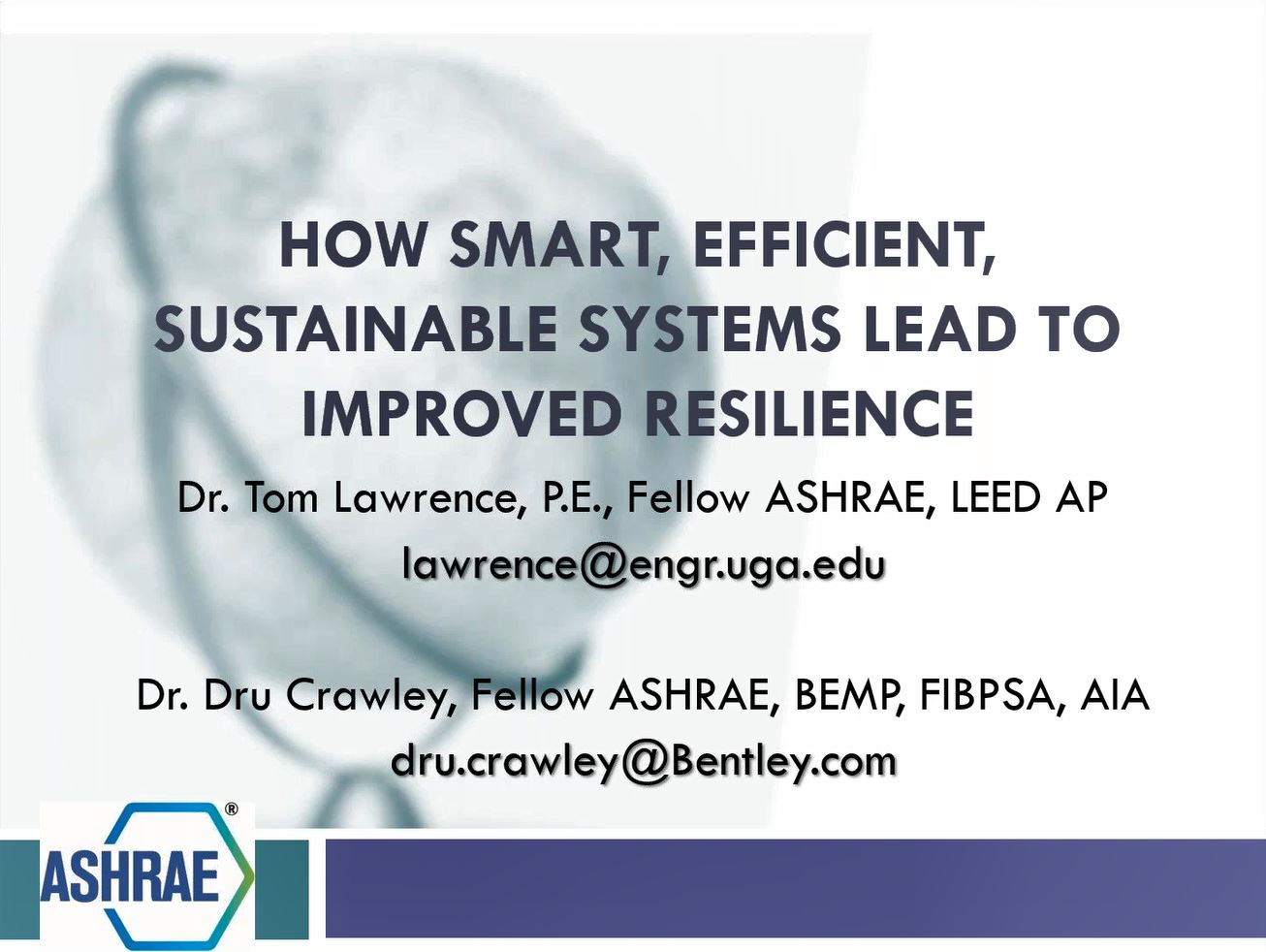Description
Resilience of a building, city, or country obviously involves more than just the physical nature of the built environment and its systems. Vulnerability to disruptive events depends on factors such as climatic region or geographic location, along with the structure of the social systems and services. In the case of individual buildings, resilience can depend on diverse issues such as what type of function the building serves, the interrelated systems and equipment it contains, the occupant demographics, distance from coastal regions, flooding risks, and the quality of the local services such as electricity and water. This course provides a descriptive summary of the concept of resilience in the built environment and how sustainability, efficiency, and smart technology can help improve resilience. Resilience can be defined (in general) as the ability to recover from, or readily adjust to, misfortune or change. The concept of resilience in the context of the built environment applies to both manmade (e.g., terrorism) and natural (e.g., weather events) events as they influence the infrastructure and systems that our society is built around. In this respect, we can define resilience as the capacity of the built environment (such as buildings, transportation, and energy and water distribution systems), as well as the communities and individuals within, to survive, adapt, and grow when subject to chronic stress or acute shocks. Chronic stresses can include items such as longer-term energy or water shortages, while acute shocks would be events such as hurricanes, earthquakes, or floods. The course then concludes by looking at future trends and technologies that will soon (or may reasonably in the near future) enter the market and of which the attendee should be aware. For example, the concept of future-proofing the building will allow resilience to more extreme weather events, potential energy or water shortages, and changing demographics.
Citation: 2019 ASHRAE Online Course
Product Details
- Published:
- 2019
- Units of Measure:
- Dual
- File Size:
- 1 file , 250 MB
- Product Code(s):
- D-2019On-15




